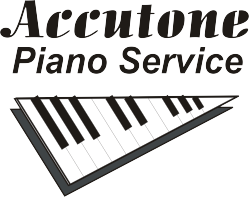The word “regulation” is kind of a strange word when we think in terms of pianos. It’s usually used in a context of laws, or rules, of behavior. In pianos, it means to reestablish the proper adjustment of the “action”, the mechanism which connects the keys to the piano hammers. The action is the via media of the pianist and the strings. It is very carefully made and adjusted, and there are hundreds of moving parts in it. Each has an important role in making the piano play properly, and in each there is the possibility that something could go wrong. A piano technician is supposed to know what every one of these moving parts is supposed to do, and if they are actually doing their job properly.
Since piano actions are made mostly of wood and wool felt, they are affected by the atmosphere in which they live. If the climate around the piano is very damp, or is exposed to changes in temperature or humidity, these parts swell or contract. Proper adjustment (aka “regulation”) is done in terms of hundredths of an inch in most cases. Actually, it is amazing that the piano action works as well as it does, considering the very tight clearances and adjustments that need to be made, all while the atmosphere is changing around it. Then, there are also tiny critters like silverfish, worms, and insects which sometimes invade pianos and eat away at the tiny felt parts inside, causing major problems which need to be addressed.
All of this is to say your piano probably needs some regulation if it is more than 10 years old. Parts wear out, and things go out of adjustment just like in your car. Periodic maintenance is necessary in both. Maybe you think, “Well, that’s just how it is”, but you may be very pleasantly surprised at how much better it feels, and how much easier it is to play your piano after it has been regulated. If you suspect something is wrong, or you would like to get an expert opinion, give me a call. I’ll be glad to inspect it to see if it needs regulation.



